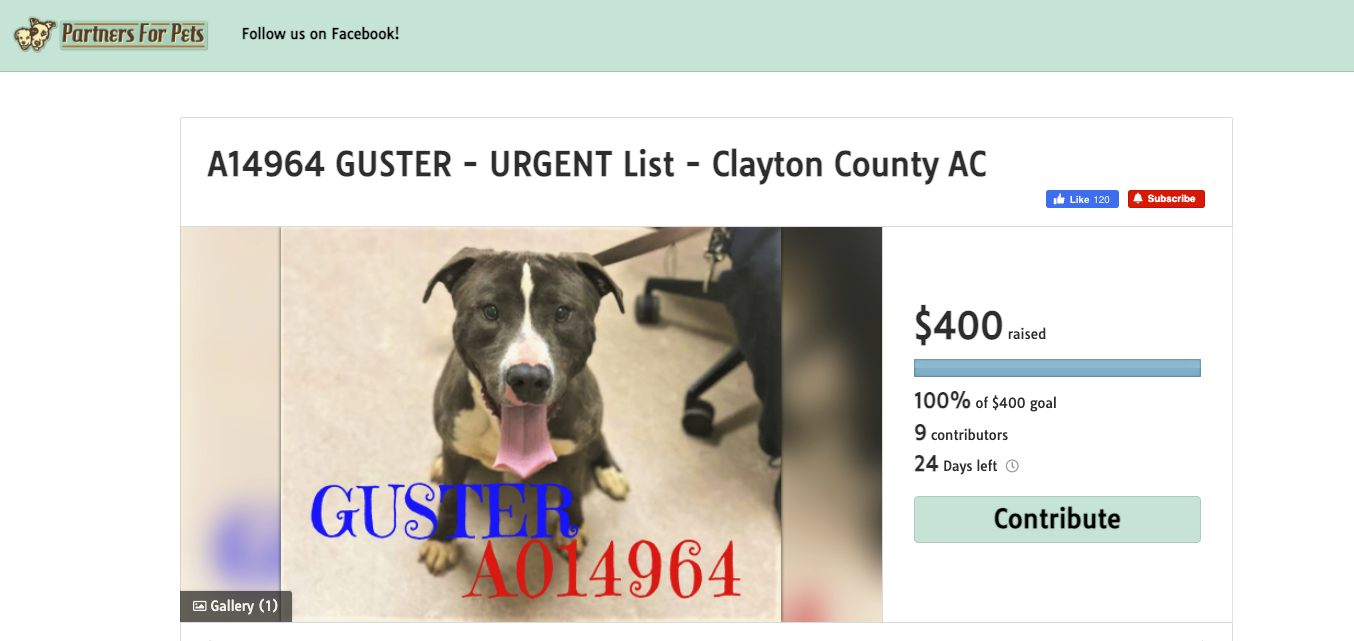Successful digital fundraising has always been the lifeblood for nonprofits. Now that so much of our lives take place online, it’s no surprise that many nonprofits today make digital fundraising a core aspect of their annual fundraising plan.
To raise awareness and encourage online giving, nonprofits should pay attention to key digital fundraising best practices. The following practical 10 online fundraising tips can help nonprofits better capitalize on fundraising technology, connect more deeply with potential and existing donors, and, ultimately, raise money more easily and effectively.
In this article, we explore how to use the latest best practices to maximize your digital fundraising efforts.
Maximize Your Efforts: 10 Digital Fundraising Best Practices
Given the efficacy of digital fundraising, it’s become the fundraising of choice for nonprofits big and small. Not only can good digital fundraising help you collect donations today, but when you also use effective best practices to develop meaningful relationships with your donors, it can lead to continual growth and better fundraising campaigns in the future.
Successful digital fundraising starts with choosing the right fundraising platform. The right fundraising platform will streamline delivery, by helping you create an attractive online donation form that is easy-to-share and easy-to-use.
Of course, the right online donation tools and platform can only go so far. To reach your fundraising goals (and hopefully go beyond them!), nonprofit organizations need to support their efforts with smart strategies designed to boost online revenue.
This starts with setting a crystal-clear goal (SMART goals are best), and then using tried-and-true approaches to getting there. Specifically, these digital fundraising important best practices can help boost your fundraising efforts and help achieve your goals with ease.
1. Reach Donors By Telling A Story
A good digital fundraising campaign starts with a good story. The more people can relate to your vision and connect with your goals, the more likely they are to help you raise funds for it.
In fact, one of the most basic psychological components of successful crowdfunding campaigns is to tell a story. Stories are how we connect as human beings, and we all crave a good one.
Of course, this is easier said than done. Getting your story right is the most important part of your campaign, but it’s also often the most difficult. It’s critical that you communicate your problem and how people can help, in a way that is both authentic and engaging.
Here Are 7 Steps To Guide You When You Write Your Campaign Story In Digital Fundraising:
- Start with a statement or rhetorical question that puts the reader in an agreeable, understanding frame of mind and intrigues them keep reading. The idea is to get your reader on your side right away. You want them to think ‘yes, I agree wholeheartedly!’ or ‘I totally get your point.’.
- Clearly state the problem you are trying to solve. In the Partners for Pets example, readers always knew they were trying to save a specific dog’s life. Emotional connection is easier when readers can relate to your story personally, so be sure to identify who you are trying to help explicitly—whether that’s a specific person or group of people, an animal, or a cause.
- Clearly describe the solution to your problem. Everyday, we read about problems that we can’t solve, which can make us tune out. Encourage your readers to tune back in by letting them know exactly how they can help solve the problem you’re presenting. Will your donation save a dog like it does in Partners for Pets? Will it go to victims of a local car crash or another accident or disaster? Get specific, and put a name and face to your problem.
- Identify the ‘gap’ between the problem and the solution. Let readers know why you haven’t solved the problem yet, bearing in mind that simply saying ‘we need more money’ isn’t likely to create that human connection you’re going for. That’s why Partners for Pets doesn’t say they need money to give high-kill shelters. They ask you to save a dog’s life, which is much more effective.
- Describe how the donor is the Hero of your story and can help you save the world. Every story needs a hero. Let donors know the value of what they’re giving so they can feel good about it. As we’ll discuss further below, using ‘Units of Impact’ can really help in this regard.
- Identify your quid pro quo. In other words, let readers know what they are going to get for their contribution. Remember that this doesn’t have to be a tangible item (although ‘stuff’ is always a bonus, as we’ll explore below). For nonprofits with smaller budgets, simple updates can work wonders. People love hearing and seeing how their contributions make an impact. Continue the story, and keep the conversation going. This is how you stay connected to your donors—which is also key to ongoing donations.
- Give a crystal-clear call to action. Your call to action is the bread and butter of your campaign. It’s your chance to ask your readers to take a specific action—i.e.: it’s where you ask your readers to become donors. Keep it simple—direct them to donate, to sign up, to share, or to take another specific act.
Being authentic and sharing your unique story can help cut through the anonymity of online donations. The more you can capture donor attention and keep them engaged, the more likely they are to click on that donation form and pitch in.
That means connecting with donors on a personal level, and also ending every story with a call to action that encourages donors to take the next steps.
Take FundRazr client Partners for Pets, for example. This incredible animal advocacy nonprofit has helped save more than 3,500 dogs from euthanasia, fundraising over $550,000 in the process. A large part of this success is due to the way they tell the personal story of each dog they are trying to save.

“When crowdfunding to save dogs, the challenge is how to get the donors’ and rescues’ attention when there are thousands of other dogs who need help in shelters,” says Amy Adams of Partners for Pets “Many shelters take pledges from donors, but typically only 40-50% of those people send in donations, so the rescues don’t really know what they are going to end up getting for each dog.”
To connect with donors, Partners for Pets instead sets up a fundraising channel with a donation form for each animal they are trying to rescue.
“People like to see and choose a dog they want to donate to and help save,” Amy shares. “Everyone can see how much this particular dog has in its FundRazr’s rescue fund. This keeps supporters motivated and focused on one dog’s needs. Also helps us keep track of funds after the dog goes to rescue. So much easier!”
To learn Partners for Pets’ success, think about how you can better share your nonprofit’s story. No doubt, if you’re a nonprofit, then you’re fundraising for a meaningful cause. Tell the story of the people you’re trying to help, the animals you’re trying to rescue, the historic building you’re trying to save. Take pictures, take video, and collect real stories from real people.
2. Build Positive Donor Relationships Through Digital Fundraising

Donor relationships matter. Growing your nonprofit revenue always begins with growing your community of like-minded donors and potential donors. Hopefully, you’re already reaching your audience through multiple communication channels: email marketing, text, and multiple social media channels.
Don’t be afraid to show your personality, especially on more informal channels. Ultimately, your goal here isn’t that first donation. Your goal is to create an engaged community of active supporters, who in turn are motivated to share your crowdfunding campaign on their own personal networks. Building a donor community is how you increase donor retention and start locking-in recurring donations, while also steadily increasing your donor base over time.
Specifically, the following actions can help keep donors engaged:
Connect with your audience in digital fundraising
Hopefully, you are using a digital fundraising tool that enables the collection of demographics of your donor base. Study your analytics to glean more information on who tends to donate to your cause (think age, gender, location, level of education, and other interests). Use this information to build your ideal donor profile, and then use this profile to create better content that is tailor-made for them.
Specifically, when you are building your donor persona that helps you create content, ask the following questions:
- How do they personally connect with your mission?
- What brought them to your organization, and what will inspire them to stay?
- How do they want you to communicate with them?
- What do they want to know about your cause?
- Do they have any feedback for your organization?
Use the answers to these questions to connect, engage, and communicate with your audience. For example, FundRazr client Aprons for Gloves, used the right combination of content to connect with their audience and raide $130,000 for boxing programs for inner city kids in 3 short months. They did this with videos, photo updates, regular blog posts, and local mini events.
“Our Social Media strategy was to build a community online where people would be excited to come back to on a daily basis,” says Aprons for Gloves representative, Chuck McIntosh. “Everything we did was designed to be shared and re-shared through social media.”
Use social media to drive donations in digital fundraising.
Social media is a crucial component of successful online fundraising. Many donors – if not all – are already on social media. Following the best practices for distributing content on social media can be a sure-fire way to reach them.
Show your gratitude for every online donation with digital fundraising.
Always thank donors promptly – this is true whether they’re a major donor or a family member who simply threw in a few bucks. This usually looks like an automatic ‘thank you’ email. You may also want to thank them publicly on your social media platforms, where appropriate.
Remember to send donation receipts as well, and always be transparent about your donation process.
Ideally, your online fundraising platform will allow you to automate this process. For example, FundRazr has built-in features that make email campaigns, including automatic ‘thank you’ emails, incredibly simple.
Keep the conversation going beyond the donation page in digital fundraising.
Remember the story you’re telling? It doesn’t stop once you’ve received your donation. So your communication shouldn’t stop with the donation, either.
That’s why you should regularly check-in with donors to let them know about the impact of their online donation. Keep them informed about all your efforts, and let them know when you’re likely to reach your fundraising goal. You want to encourage donors to stay as connected as possible, which you do by always giving them that next chapter in the story.
3. Measure Units of Impact For Your Digital Fundraising Campaigns

One of the best ways to reach more donors and tell a better story is to focus on Units of Impact (UoI). This is how you show donors the impact they’re having, which studies show they very much want to see.
Many nonprofits think that fancy spreadsheets and complex annual reports are the way to increase donor retention. But when was the last time you willingly read through a complex annual report? And how compelling did you find it?
That’s why the better approach is to use UoI, which shares real outcomes with donors. Again, it’s about creating a story, and showcasing real-life success. Break donor impact into tangible, human stories that show the real impact of their donation.
Consider Partners for Pets again. Remember, this nonprofit’s mission is to save dogs from euthanasia. That’s why their UoI is success stories of rescued dogs in their happy new homes. The more they’re able to share these stories with their audience, the more their audience will feel good about their donations – and hopefully be inspired to keep giving.
Or take FundRazr clients Forests Without Frontiers. As you can see, they immediately let potential donors know exactly what they’ll accomplish with their donation.

4. Experiment With Different Crowdfunding Campaigns
If there’s one online tool every nonprofit professional should have in her toolkit, it’s the ability to experiment. The reality is that even the best conceived campaign following the best practices possible might still fail to hit the mark, for a variety of reasons. If we’ve learned anything from the pandemic, it’s that being flexible is imperative when trying to raise money online.
When you work with the right fundraising platform, there are a variety of fundraising tools available at your disposal: peer to peer fundraising efforts, email campaigns, microprojects, perks and wishlists, DIY fundraising campaigns, along with virtual events and in person events.
Specifically, here are 6 proven campaigns types that are catered to your specific needs:
- Microprojects fundraising—large campaigns that can be broken down into small micro-projects where each project will have an individual page with full fundraising capability
- Peer-to-peer campaigns— where communities and volunteers can raise money on behalf of the organization
- Wishlist campaigns—which demonstrate a clear value of donation by breaking down the fundraising goal into tangible wishlist items and giving the donor a choice on what they prefer to fund
- Recurring donations— which have the functionality to collect monthly donations from supporters and send automatic updates without paying monthly platform fees
- Branded sponsorship campaigns— where organizations can show a sponsor’s support on the page by enabling a sponsor to offer a special deal for supporters in exchange for donations
- DIY projects—where volunteers and advocates can run campaigns based on the organization’s behalf, while the organization still has full control over the message and campaign.
5. Experiment With Smaller Campaigns
Sticking with the theme of working to find your digital fundraising sweet spot, don’t be afraid to experiment with smaller campaigns. You don’t need to raise your whole year’s expenses in one go!
So take a look at your project. Do you need to raise ALL your funds immediately, or can it be broken into smaller campaigns?
Consider Partner for Pets again. They don’t try to raise money for all the dogs they want to save at the start of the year. They get much better results by treating each individual case separately.
We often recommend that nonprofits run one small campaign for 4-6 weeks, take a breather, and then run another campaign with a different story and different buy-ins. It’s a great way to keep things fresh, and to ensure you have regular updates for ongoing communications.
6. Offer Bonuses—Even Inexpensive Ones
Speaking of buy-ins, it certainly doesn’t hurt to offer donors perks. We’re all human, and we all love a bonus.
This is how veterinary scientists raised over $120,000 to raise money uber cute ‘celebrity dachshund’ Crusoe when he needed surgery, as well as to support veterinary medicine at Cornell University. Offering prizes like wristbands, t-shirts, and personalized thank you notes in exchange for donations make the campaign fun, interactive, and rewarding.
See more FundRazr digital fundraising campaigns to inspire you here.
And don’t worry if you can’t offer physical perks—you may just need to get creative with things like members-only newsletters or other exclusive content.
7. Create a great donor experience
You want to make it incredibly easy for people to donate to your nonprofit online. You do this by creating a great online giving experience, with easy-to-use donation pages and donation forms. It should also be easy and automatic to become a monthly donor. Look for platforms that offer these features, and that also offers a variety of ways to make secure payments online, ideally via many different credit cards, as well as PayPal.
Remember that fundraising technology is on the rise, and to stay competitive, you need to offer a high-end online experience. Especially if you are specifically targeting younger donors, this means you should enable mobile giving and ensure it’s user-friendly as well.
At Fundrazr, we offer 5 features that will improve your conversion rates and lead to an improve donor experience:
- Combining Stripe and PayPal, which means donors can pay with debit, credit, bank payments, Google Pay, Apple Pay or PayPal. We also offer PayPal MarketPlace checkout for an even smoother donation flow.
- Subscriber capture popups on exit intent and post-donation—i.e.: we make it easy to capture more email subscribers. Not everyone is going to donate the first time they’re on your page, but everyone can sign up for your mailing list.
- Conversion-optimized website layouts, which we trial and test to make sure our donate buttons are in just the right place for maximum visibility. Our 9 easy-to-use layouts work great on mobile, too.

- Robust analytics that help you track activity and engagement, so you can see what actions lead to what behaviors. You can use this information to continually improve your campaign and your donor experience over time.
- Donate button and one-page donation page, which can you embed on your website. Donors will be less distracted when trying to make their donation.
Creating a great donor experience is important for eliciting donations, of course, but it’s also what will help you build a real connection with donors over time, which can be invaluable.
7. Help Your Community Give Easily
In line with a great donor experience, you want to make it as easy as possible for potential donors to actually give money online. Imagine if you did all the work of building a great story, fostering relationships, and creating great perks—but then donors weren’t able to actually give easily?
Ultimately, you want to create a multi-avenue approach, which FundRazr makes very easy. Not only does this include multiplate payment portals like we’ve covered (like PayPal and credit cards). It also includes two other amazing features: text-to-give, and QR Codes.
Text-to-give is a wonderful option if you have mobile phone lists available. Donors can text a number to receive a link to donate to your campaign.
Meanwhile, QR codes can help you take things offline. They can be posted in cafes, community centers, and anywhere else they might be handy. Donors simply point their phone camera on the code, and be taken to your campaign page.
8. Email Marketing
Email fundraising campaigns are another way of encouraging donors to stay engaged. Use emails to send updates about your campaigns and what you’ve accomplished. You can also send emails to elicit donations. For example, Partners for Pets sends emails twice a week, the day before an euthanasia, with the story of the dog they are trying to save and a link to their donation form.
There’s a reason that email marketing is ubiquitous in all forms of online marketing and fundraising: it works. There’s a lot of noise online and on our social media feeds. Emails can help you cut through the noise and reach people directly and personally.
Do you have an email list set up for your organization that you are able to send marketing material to? And just as important: does your fundraising platform make them easy to send automatically? Hint: it should!
FundRazr currently integrates directly with Mailchimp for easier management of email lists.

Or, if you have another CRM and would like integration capabilities, and have a little extra wiggle room in your budget, we also work with Zapier as a middleman API between outside CRMs and our platform. Sound complicated? Don’t worry—like we’ll cover below, our Strategists will help you every step of the way!
9. Reach More People With Ads—Specifically Google Ads
Wouldn’t it be nice to have the budget to run an online campaign that reaches thousands of new people? Unfortunately, that just isn’t an option for many nonprofits. But fortunately, there’s a great alternative for nonprofits in Canada and the US.
Specifically, if you have a nonprofit, you may qualify for Google Ad grants up to $10,000 a month. Just think of all the new donors you can reach! Learn more about Google Ad grants here.
10. Work With A Digital Fundraising Strategist

Finally, working with a digital strategist is one of the best ways to ensure online fundraising success.
Specifically, a digital fundraising strategist can help you raise money online by helping you develop and implement a long-term strategy that is best for your needs. This in turn can help you raise funds faster and more reliably.
For example, your digital fundraising strategist can help you determine if your online donation forms and website are maximized for conversions (ie.: if they’re engaging and likely to encourage donations).
Of course, not every organization has the budget to work with nonprofit professionals who are well-versed in online donations. But that doesn’t mean you’re on your own – because we provide digital strategy services free of charge. This is one of the main ways we ensure our clients are always reaching – and exceeding – their goals.
At FundRazr, we work with just about every type of organization in the nonprofit sector, and we continually fine tune our platform to ensure it offers the best possible online fundraising tools. Get started for free now.



